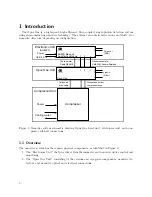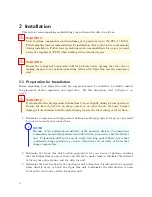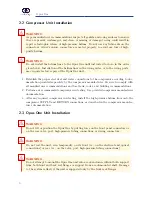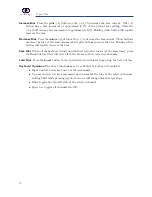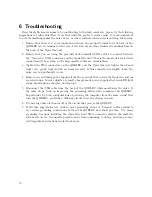
Opus One
2.2 Compressor Unit Installation
WARNING
As per manufacturer recommendations, inspect all gaskets and o-ring surfaces to ensure
they are present, undamaged, and clean. A missing or damaged o-ring could result in
rapid, catastrophic release of high-pressure helium. Do not use any lubricants on the
connectors. Always ensure connectors are mated properly to avoid any loss of high-
purity helium.
B
WARNING
Do not install the helium lines to the Opus One until instructed to do so in the order
given below. Installation of the helium lines in the wrong order, or to the wrong ports,
may require factory repair of the Opus One unit.
B
1. Establish the proper electrical and water connections to the compressor according to doc-
umentation provided separately by the compressor manufacturer. Be sure to comply with
all manufacturer recommendations and local laws, codes, and building recommendations.
2. Perform any recommended compressor run testing. See provided compressor manufacturer
documentation.
3. After any required compressor run testing, install the high-pressure helium lines onto the
compressor SUPPLY and RETURN connections, as described in the compressor manufac-
turer documentation.
2.3 Opus One Unit Installation
WARNING
Do not lift or position the Opus One by putting force on the front panel connectors or
on the rear valve, port, high-pressure tubing connections, or wiring connectors.
B
WARNING
Do not rest the unit, even temporarily, on its front (i.e., on the electrical and optical
connections) or rear (i.e., on the valve, port, high-pressure tubing connections).
B
WARNING
Do not attempt to mount the Opus One unit into a rack enclosure without both support
from both front and back rail flanges or support from a rack-mounted shelf. Damage
to the system is likely if the unit is supported only by the front rack flanges.
B
9






